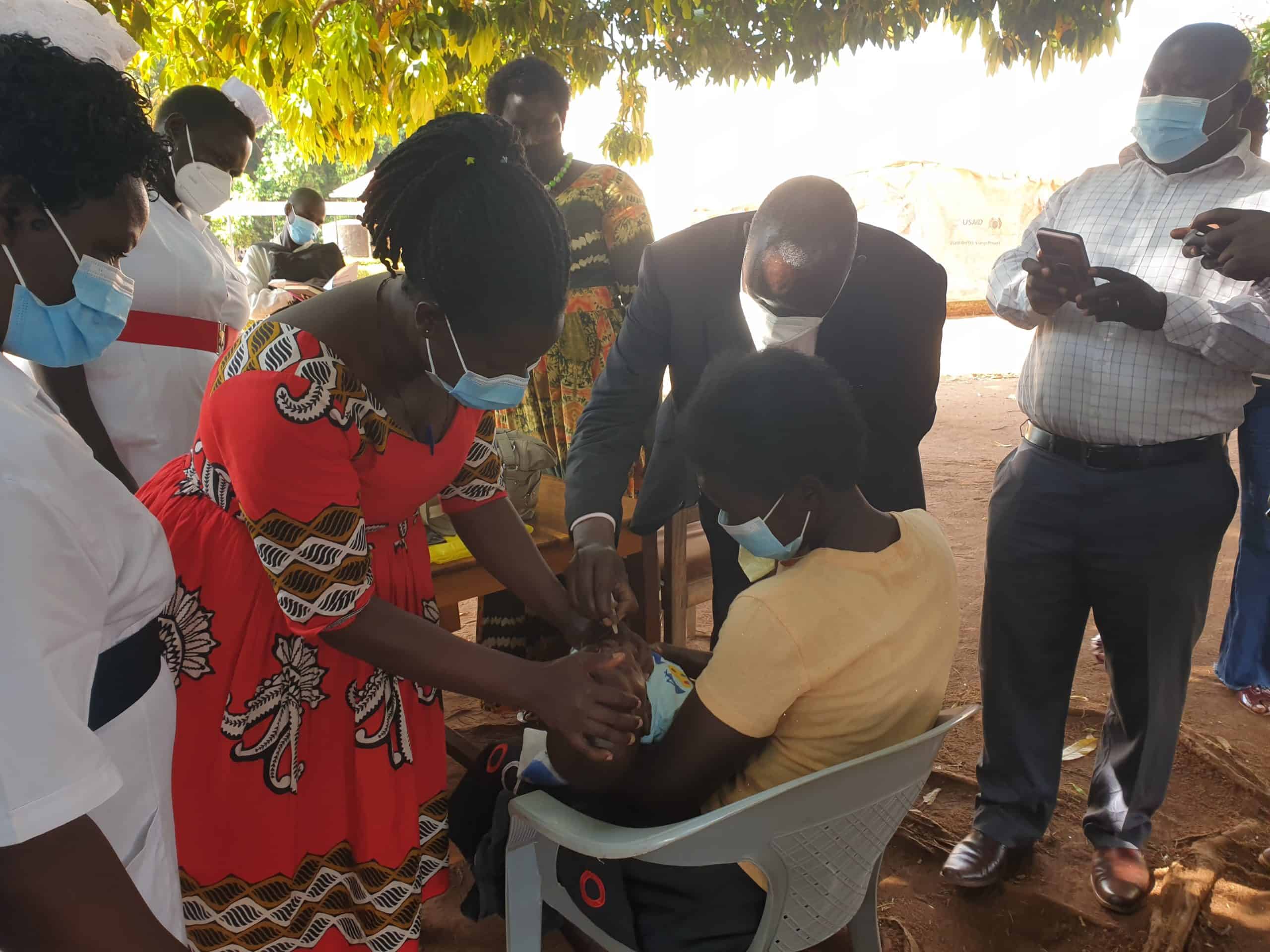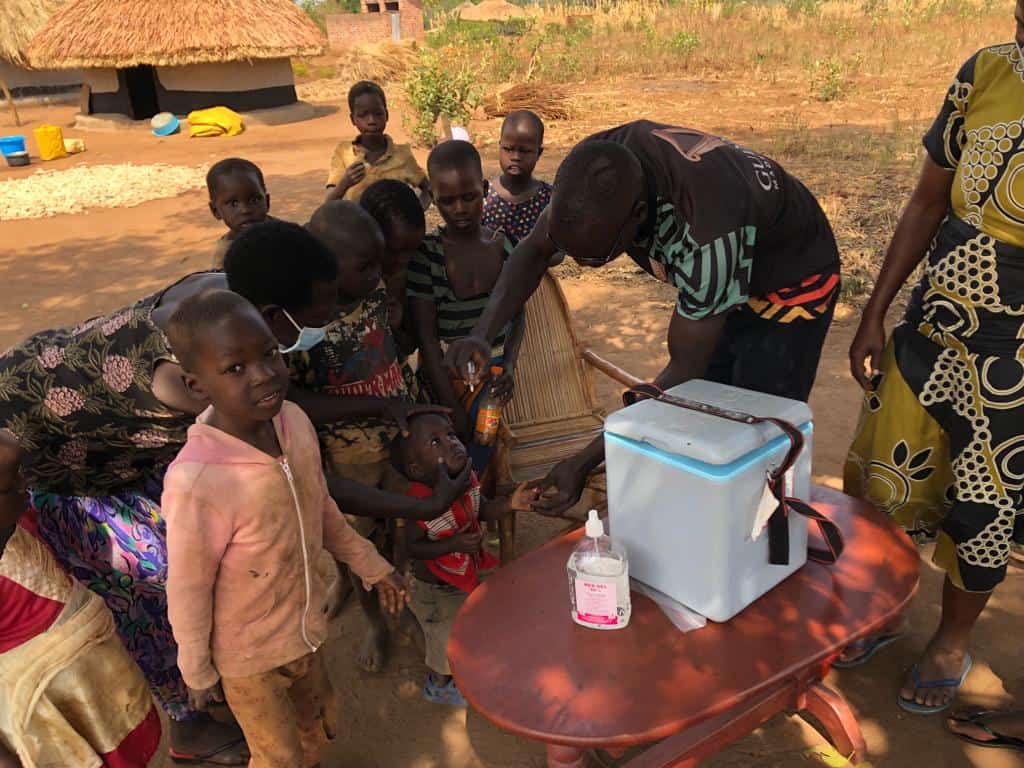Using Door-to-door Vaccination to Stop Polio in Northern Uganda
April 15th, 2022 | story
In 2006, the World Health Organization (WHO) declared Uganda polio-free following the “Kick Polio out of Africa” campaign that resulted in zero indigenous polio cases. For more than 10 years, no case of polio was reported in Uganda.
However, in July 2021, the Ministry of Health (MOH) confirmed new polio virus cases in the country. The MOH said, these were the circulating vaccine-derived polio virus type 2 detected from areas around sewage plants in Kampala, the vaccine for which was withdrawn from the country’s routine immunization program in 2016. This meant that children under five years of age were not protected from type 2 polio virus.

The reemergence of this virus was a result of travel and commerce between neighboring countries; as MOH officials noted, it takes only one traveler with polio to bring the disease into the country. Children most at risk are those who never had the polio vaccine or who do not receive all recommended doses.
When the outbreak occurred, the USAID Regional Health Integration to Enhance Services-North, Lango (RHITES-N, Lango) project, in collaboration with the MOH, developed strategies to keep the Lango Sub-region of northern Uganda polio-free by maintaining immunity through vaccination.
In line with the goal to interrupt and stop all circulating vaccine-derived polio virus, RHITES-N, Lango supported the MOH’s campaign for door-to-door mass vaccination in the region, targeting all children under five. The door-to-door approach was applied in response to challenges like lockdowns due to the COVID-19 pandemic, and long distances and lack of transport to clinics. The approach also provides an opportunity for health workers to talk with parents about the benefits of vaccination against all vaccine-preventable childhood diseases and COVID-19.
The campaign went very well in my area of jurisdiction,” said Okada Francis, immunization focal person at Acii Health Center II in Amolatar District. “We visited every house with children under five years, including places cut off by floods, [which] we reached by boats.”
Jennifer, a 34-year-old mother of three in Amolatar District, is happy that her one-year-old was vaccinated. “I know polio makes a child lame. I wouldn’t want to see my son struggling to do certain activities simply because I didn’t get him vaccinated,” she said.
Working closely with health partners at national, regional, district, and community levels, the project has scaled up immunization activities and birth cohort monitoring in Lango to improve and sustain polio vaccine coverage. The first round of the campaign concluded in January 2022 with the vaccination of 549,064 children under five.

Story and photos by Jasper Abor, child health advisor, USAID RHITES-N, Lango
We strive to build lasting relationships to produce better health outcomes for all.